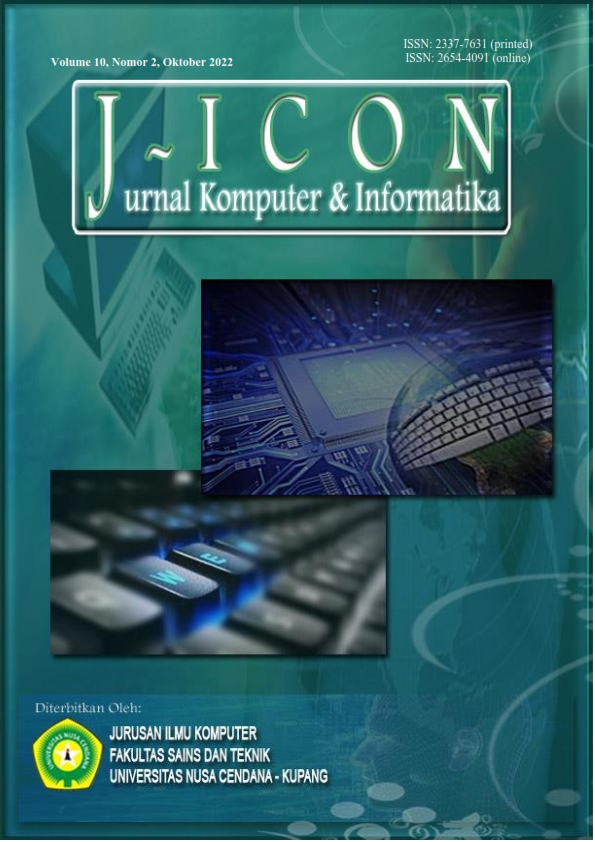DEVELOPMENT OF LAKE TOBA COMMUNITY-BASED TOURISM WEB APPLICATION (VISIT TOBA)
Abstract
The problem faced by several tourist destinations in the Lake Toba Region is that branding has not been maximized using digital media. In this study, we have the goal of developing the VisitToba Community Based Tourism (CBT) application to develop the tourism potential of the Lake Toba area through digitalization with the concept of community empowerment, improving the quality of tourism and the economy of the tourism community in the Lake Toba area. The Visit Toba application is expected to be a forum for the development of local small and medium-sized businesses as tourism supporters, where tourism actors can take advantage of the features in this application to be able to collaborate with each other to make a tour package. Increased community participation in efforts to develop and strengthen tourism in the Lake Toba area is the expected result with this application, so that a partnership is established between tourism entrepreneurs in the Lake Toba area with the tour packages provided. Applications built using the Waterfall model and have passed the testing phase so that the results in the form of a website can already be implemented in the Lake Toba area.
Downloads
References
Y. Pratama, A. M. Sinaga, R. A. Sianturi, and V. Situmorang, “Literasi Media Digital Pada Komunitas Pariwisata di Kawasan Danau Toba,” Jurnal Master Pariwisata (JUMPA), pp. 245–258, 2021, doi: 10.24843/jumpa.2021.v08.i01.p13.
B. Rusyidi and M. Fedryansah, “Pengembangan pariwisata berbasis masyarakat,” Focus: Jurnal Pekerjaan Sosial, vol. 1, no. 3, pp. 155–165, 2018, doi: 10.24198/focus.v1i3.20490.
V. Situmorang, Y. Pratama, R. A. Sianturi, and A. M. Sinaga, “PERANCANGAN APLIKASI” SIAPPARA” UNTUK PELAPORAN SETORAN E-RETRIBUSI PASAR KABUPATEN HUMBANG HASUNDUTAN,” Jurnal Komputer dan Informatika, vol. 9, no. 2, pp. 253–262, 2021, doi: 10.35508/jicon.v9i2.5256.
R. A. Sianturi, A. M. Sinaga, Y. Pratama, H. Simatupang, J. Panjaitan, and S. Sihotang, “PERANCANGAN PENGUJIAN FUNGSIONAL DAN NON FUNGSIONAL APLIKASI SIAPPARA DI KABUPATEN HUMBANG HASUNDUTAN,” Jurnal Komputer dan Informatika, vol. 9, no. 2, pp. 133–141, 2021, doi: 10.35508/jicon.v9i2.4706.
R. A. Sianturi, Y. Pratama, V. Situmorang, and A. M. Sinaga, “Development of Tourist Village Website to Increase Tourism in Lake Toba,” The IJICS (International Journal of Informatics and Computer Science), vol. 6, no. 1, pp. 64–72, 2022, doi: 10.30865/ijics.v6i1.4043.
K. K. Nisa, “Pengembangan Pariwisata Berbasis Masyarakat di Desa Wisata Panusupan Kecamatan Rembang Kabupaten Purbalingga,” Hermeneutika: Jurnal Hermeneutika, vol. 5, no. 1, pp. 1–12, 2019, doi: 10.30870/hermeneutika.v5i1.7380.
D. Satrio and C. Sabana, “Pengembangan Community Based Tourism Sebagai Strategi Pemberdayaan Ekonomi Masyarakat,” Pena Jurnal Ilmu Pengetahuan dan Teknologi, vol. 32, no. 1, pp. 31–43, 2018, doi: 10.31941/jurnalpena.v32i1.935.
S. R. Budiani et al., “Analisis Potensi dan Strategi Pengembangan Pariwisata Berkelanjutan Berbasis Komunitas di Desa Sembungan, Wonosobo, Jawa Tengah,” Majalah Geografi Indonesia, vol. 32, no. 2, pp. 170–176, 2018, doi: 10.22146/mgi.32330.
F. Duwitau and R. Wijanarko, “Sistem Informasi Pariwisata Daerah Kabupaten Nabire Berbasis Web,” Jurnal Informatika Dan Rekayasa Perangkat Lunak, vol. 2, no. 2, p. 104, 2020, doi: 10.36499/jinrpl.v2i2.3566.
D. Danang and F. Febriyantahanuji, “Rancang bangun sistem informasi pariwisata dan budaya berbasis web menggunakan google api pada kantor pariwisata dan kebudayaan kabupaten Blora,” in Prosiding Seminar Nasional & Internasional, 2018, vol. 1, no. 1, pp. 232–241.
Y. Pratama and V. Situmorang, Software Requirement System (SRS) Visit Toba. Medan: Institut Teknologi Del, 2020.
Y. Pratama, “Visit Toba Website,” 2020. https://www.visit-toba.id (accessed Sep. 30, 2022).
Copyright (c) 2022 Yohanssen Pratama, Riyanthi A. Sianturi, Helmuth S. Tampubolon, Kristopel Lumbantoruan, Hotni M. Simatupang, Indah T. Tampubolon, Yohana C. Manullang

This work is licensed under a Creative Commons Attribution 4.0 International License.
The author submitting the manuscript must understand and agree that if accepted for publication, authors retain copyright and grant the journal right of first publication with the work simultaneously licensed under a Creative Commons Attribution (CC-BY) 4.0 License that allows others to share the work with an acknowledgment of the work’s authorship and initial publication in this journal.
 Yohanssen Pratama(1*)
Yohanssen Pratama(1*)




